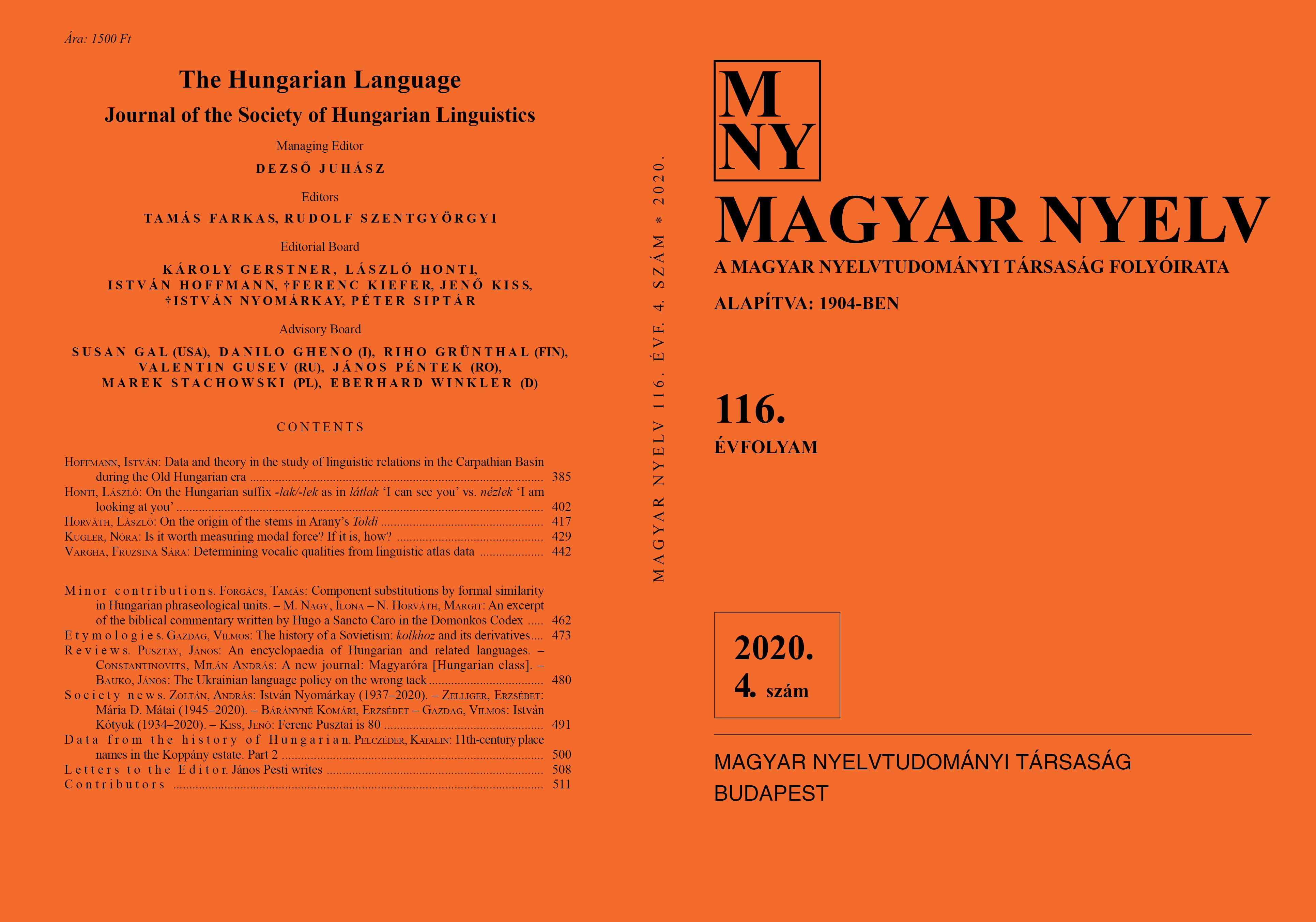On the Hungarian suffix -lak/-lek as in látlak 'I can see you' vs. nézlek 'I am looking at you'
DOI:
https://doi.org/10.18349/MagyarNyelv.2020.4.402Keywords:
Hungarian language, morphology, verbal ending, language historyAbstract
The author of this paper tries to find answers for two questions in connection with the Hungarian verbal ending -lak/-lek (lát-lak ‘I can see you’, néz-lek ‘I am looking at you’): (1) Does this ending belong to the definite or the indefinite conjugation? (2) How did this complex ending come into being? The answer to the first question is that such verb forms, considering their functions, refer to definite objects, though their personal ending -k referring to the subject directly links them to the indefinite conjugation. The author takes verb forms in -lak/-lek to be associated with the direct object by the element -l-, and morphologically and hence functionally referring to a definite object – but not expressis verbis formed as part of the definite conjugation but rather to be a particular and unique phenomenon. The most authentic answer for the second question was in fact born already more than 100 years ago, which was debated by some people from time to time: the -lak/-lek ending has developed from the first person singular of frequentative (and denominal) verbs with an -l suffix by means of metanalysis. In the -lak/-lek ending two suffixes were associated: the -l verbal ending of 2sg and the -l frequentative (and denominal) suffix which are homophonic with each other, therefore they became one portmanteau morpheme of the 2sg object and of the 1sg subject.
Downloads
Published
Issue
Section
License
Copyright (c) 2024 László Honti

This work is licensed under a Creative Commons Attribution-NonCommercial-NoDerivatives 4.0 International License.
Magyar Nyelv is a Diamond Open Access periodical. Documents can be freely downloaded and duplicated in an electronic format, and can be used unchanged and with due reference to the original source. Such use must not serve commercial purposes. In the case of any form of dissemination and use, Hungarian Copyright Act LXXVI/1999 and related laws are to be observed. The electronic version of the journal is subject to the regulations of CC BY-NC-ND (Creative Commons – Attribution-NonCommercial-NoDerivatives).
The journal permits its authors, at no cost and without any temporal limitation, to make pre-print copies of their manuscripts publicly available via email or in their own homepage or that of their institution, or in either closed or free-for-all repositories of their institutions/universities, or other non-profit websites, in the form accepted by the journal editor for publication and even containing amendments on the basis of reviewers’ comments. When the authors publicize their papers in this manner, they have to warn their readers that the manuscript at hand is not the final published version of the work. Once the paper has been published in a printed or online form, the authors are allowed (and advised) to use that (post-print) version for the above purposes. In that case, they have to indicate the exact location and other data of the journal publication. The authors retain the copyright of their papers; however, in the case of an occasional secondary publication, the bibliographical data of the first publication have to be included.



